Episode #33
"Digital medicine is just medicine"
 Hosted by Paddy Padmanabhan
Hosted by Paddy Padmanabhan
 Lorem ipsum dolor sit amet, consectetur adipiscing elit. Ut elit tellus, luctus nec ullamcorper mattis, pulvinar dapibus leo.
Lorem ipsum dolor sit amet, consectetur adipiscing elit. Ut elit tellus, luctus nec ullamcorper mattis, pulvinar dapibus leo.In this episode, Daniel Barchi discusses the current state of digital transformation in healthcare, their goal to bring cutting-edge technology, and focus on delivering outstanding patient care.
According to Daniel, a good technology is one that saves clinicians and caregivers time without getting in their way. He believes that healthcare technology is “80% people, 15% process, and 5% technology.” He further cautions that while using advanced technologies such as AI, health systems need to be thoughtful, careful, and respectful of the way technology interacts with patients.
The healthcare system as a whole has very low thresholds for measuring progress in adoption rates for digital health tools such as digital front doors. Digital health startups have a lot of brilliant ideas; however, they are years away from being integrated into core EHR systems. Daniel advices startups to get deeply embedded with their clinical partners to develop innovative solutions for healthcare.
Click to See TranscriptWelcome to The Big Unlock podcast where we discuss data analytics and emerging technologies in healthcare. Here are some of the most innovative thinkers in healthcare information technology talk about the digital transformation of healthcare and how they are driving change in their organizations.
Paddy Padmanabhan: Hello again, everyone, and welcome back to my podcast. This is Paddy and it is my great privilege and honor to introduce my special guest today, Daniel Barchi, CIO of the NewYork-Presbyterian Hospital. Daniel, thank you for joining us and welcome to the show.
Daniel Barchi: Great. Thank you for having me Paddy.
Paddy Padmanabhan: You’re welcome. So, Daniel, I was at your presentation recently at the CHIME Falls Forum and your presentation was titled ‘Digital Medicine is just Medicine.’ We know that healthcare is in the early stages of a digital transformation. So maybe you could start by giving us an assessment of the current state of digital transformation in the healthcare sector.
Daniel Barchi: Sure. Well, thank you. First of all, I’d think I’d start by saying digital medicine is just medicine in the same way that really good technology is not about technology. It blends into the fabric of what we do in our everyday lives. So, at one point, I’m sure it was novel that somebody owned an automobile and today we don’t think about owning or using an automobile. I was reading the book ‘Thinking Machines’ recently about the birth and growth of artificial intelligence. And it pointed out the fact that the first supercomputers were huge, and they filled rooms and now they’re small and, on our wrists, and we just don’t think about technology. And in the same way, technology and healthcare is important. Quite frankly, if we’re eating up physician or nurse time dealing with technology, then technology is not doing what he or she needs. The technology that’s important for medicine called digital medicine is that which blends seamlessly into what we do daily in taking care of our patients. And so, it’s my goal and that of my team to certainly being on the cutting edge of what technology can offer. But it’s not an end to itself. It just blends into our larger focus on delivering outstanding patient care.
Paddy Padmanabhan: Right. And I recall you had mentioned something along the lines of technologies, 80 percent people’s, 15 percent process, and 5 percent technology. Did I get that right?
Daniel Barchi: That’s true. Although, you know, I’ve been using this quote for years and it was originally coined by my colleague, Marc Probst, CIO of Intermountain. And I use it all the time because it’s absolutely true. I’ll repeat it again. Healthcare technology is 80 percent people, 15 percent process, and only 5 percent technology. Day in and day out people who are leading technology transformation in healthcare are not focused on python programming, or XML, or interfaces, or FHIR. What we’re focused on is how does this work for the end-user? What do they need? Do they need the two of them? Or can we get down to one of them? Can we cut down the time that they spend digging around these systems by making it more ubiquitous? It’s all about the people on the process side, not the technology side.
Paddy Padmanabhan: Right. My firm’s research suggests that health systems are driving a lot of digital transformation initiatives. However, they seem to be a portfolio of standalone projects and for the most part, if I look at the health system landscape as a whole, most health systems are relying primarily on their electronic health record platforms for driving digital initiatives. Is this consistent with what you’re seeing in the market? And maybe you can talk a little bit about how you’re approaching it at NYP?
Daniel Barchi: You make a very good point. We always strive to adopt technology, which is going to be cutting edge and it’s going to help our physicians. At the same time, we want to make sure that it’s not getting in their way. And so, there’s a push-pull, the push being that we want to embrace small companies that are coming up with new ideas. And then pull being to make sure it’s part of the overall fabric of what we’re doing. And so, it’s a fine balance between being on the bleeding edge of what’s happening and being on the trailing edge of what’s happening. So, we like to think that we at Presbyterian were thinking about that balance from the physician and nurse’s point of view all of the time. We’re really focused on our core electronic medical record. And let’s be honest, that’s where our clinicians spend the bulk of their day. And we want everything to be accessible through the electronic medical record. We don’t want to say, sure, you do your core data and your core documentation and ordering in the electronic medical record. But when you want to use a cool decision support tool, log out and log into this other system, or when you want to use the latest PACS system, log out of the EMR and log into this other system. And so, you know, the great technology that comes in startups that are being innovative is generally years away from being well integrated into the core EMR. So, we need to think about where we can embrace the best of what’s cutting edge and coming from small companies, small startups, small standalone tools versus what we can incorporate in the larger EMR. And there’s probably a threshold, you know, something that is a 100 percent great idea, a standalone application versus 70 percent as good using the functionality of the EMR. Probably the 70 percent embedded in the EMR beats the 100 percent standalone because of the ease of working and for the idea that everything that’s done in the core system is interfaced with everybody else. So, it benefits not only the clinician who’s using that tool, be it the outside tool or the inside tool, but the inside tool is integrated into the seamless care of patients end to end.
Paddy Padmanabhan: Yeah, and this is very consistent with what I hear from other CIOs, as well as. This constant trade-off between what might be the absolute best in class on the one hand, but also what is more practical and optimal for the here and now. And you made a couple of very good points about the importance of not adding to the physician burden, which was kind of your underlying message about using the electronic medical record as the landing page or a landing point for physicians to use some of the advanced functionalities. Let’s talk about the front end a little bit. There is a lot of talk about digital front doors today and primarily relating to patient access. And a lot of health systems have launched some very intuitive apps, including NewYork-Presbyterian. And there are also nontraditional players like Walgreens getting into this space. What are your thoughts on how these digital front doors are reshaping the patient experience? And maybe you can share some thoughts from your own experience with the apps that you’ve launched, at NewYork-Presbyterian?
Daniel Barchi: Great. Thanks for bringing this up. Just to use an example, going back 20 years or more, we can think about a lot of this in the way that airlines did about booking and ticketing systems. In that 20 years ago, it was all about how the consumer, the traveler, gets in contact with the airline to start the process and make things happen. And today, it’s all about putting the perfect app in travelers’ hands and letting them make their reservations, do the special requests and drive the process. We can think about the healthcare industry being on the early phases of doing this, where certainly the clinical care is delivered by doctors and nurses in physician practices or in the hospital. But the coordination of it more and more is getting into the patient hands. And the only way you can allow them to do this if you give them access to the fundamental operating systems, primary through a portal. We’re going through the process of implementing a single common EMR across all 10 of our hospitals as well as Columbia doctors and Weill Cornell. Medicine is simply a huge endeavor, and as we think about this core EMR that we’re implementing, there will probably be about 45 to 50 thousand clinical and financial and operational users on a daily basis. But what we realized at one point is, you know, they’re probably going to be one hundred and fifty thousand patients that use this system every day through the portal. So, it’s great that we’re doing it for physician efficiency and for operations in the hospital. But it has to be a really good tool as a portal for the patients to use it and get the data themselves. And then I tie this back when I comment about standalone. Sure, it’s great if you’ve got a perfect fertility app or motherhood app or depression screening app, and it’s great that specialized standalone tool can go deep. But I think the best applications that face patients are the ones that go deep. But they’re also broad. They tie into the larger environment of care, including legacy records, including prescriptions and allergies and the ability to schedule follow up appointments.
Paddy Padmanabhan: Yeah, and can you talk to any metrics or how do you track the effectiveness of how these apps are truly reshaping the patient experience or impacting your own inflows if you will? What kind of metrics do you track for, telling whether it’s successful or not?
Daniel Barchi: Well, I will start by saying that I think that health care is generally still very new into this. Even core EMRs that have very good patient portals, it is the few and far between health systems that have really made great inroads in getting their patients to use them. And even when the functionality exists, getting the physicians and physician practices to use them and saying, you know, we probably don’t need Daniel at the front desk answering phones and making every single appointment for Dr. Jones, maybe we should open up Dr. Jones’s schedule. And I know that Dr. Jones is reluctant and that she really likes control over her schedule and understanding exactly what patients are getting scheduled when. But wouldn’t it be more efficient if we either had the front desk staff answering questions and doing follow up and not just making appointments and putting this capability in the hands of the end-user? So, I’d say that we as an industry are very, very new to this. And I think in many cases we’re testing the waters in terms of effectiveness. Most health systems, including us, are just measuring the percentage of our patients that are even signed up on the portal, never mind using it. It’s a very low threshold. So, what percentage of our active patients are using the portal today? The next step is going to get into, instead of process metrics like simply signing up but outcome metrics. So, we have more than nine million inbound phone calls to our health system annually. How do we reduce that over time by making a lot of what patients do online self-service? And we’re starting to adopt some artificial intelligence and putting it on the front end of our phone calls so that we can answer basic questions about scheduling or visiting hour time or directions, just very, very basic things to at least call off those basic things that can be best answered automatically for a patient. So that people who are answering calls are better suited to answer and more deeply the kind of question that our patients raised.
Paddy Padmanabhan: All right. I’ll come back to AI in a moment. But you mentioned health care outcomes in general. And of course, in the current era that we’re in. It’s all about data. It’s about harnessing data for insights. And it’s the number of data sources is increasing. The types of data is increasing. However, my understanding is that aggregating and analyzing the data in a healthcare context has been a challenge and remains a challenge despite some progress due to data quality, data silos, interoperability issues and so on. Can you share your experience at NewYork-Presbyterian on how you’ve approached this in your world?
Daniel Barchi: You raise a very good point. Data is certainly an outstanding tool to be able to improve our operations financially, from an efficiency point of view and from a clinical point of view. I often think that when people say it’s hard to get data out of systems, be it financial systems or billing systems or clinical systems, whether in healthcare or anywhere else. It’s sort of a lazy second hand for acknowledging that this work is challenging, doesn’t mean it’s impossible, but nothing’s easy. If you were to say, you know, organizing all the photos that my family has taken from all of our vacations and celebrations over the past 10 years. Yeah, that’s difficult. That’s not impossible. You need to do the work. I feel in the same way, aggregating and analyzing data is difficult, but not impossible. And where members of our research teams at Columbia and NewYork-Presbyterian and Weill Cornell have wanted to, they’ve gotten access to the data and been able to drill down and make real conclusions about efficiency or about clinical outcomes. And I think that it’s never going to be easily done until we get to national standard for how we record data in more discrete fields. We are always going to have issues of unstructured data, physician notes and the quality of the data and the quality of the data that comes from clinical care is never going to meet the standard that researchers want. And it’s our job as technology people who work in healthcare to tie the two together. But I wrap up again by making the point that just because it is challenging work doesn’t mean that it is impossible to do. And we should spend more time actually drilling down into what conclusions do we want to draw, what data sets we need to get that information from, and how do we go about taking the eight steps that are necessary to do it than simply saying it’s hard to get the data out of the system.
Paddy Padmanabhan: So, can you share a little bit of detail on what your data and data integration, data aggregation, and data management infrastructure looks like at NewYork-Presbyterian?
Daniel Barchi: Sure, we are doing a lot of good work led by our analytics leaders and informatics departments at Columbia, Weill Cornell and NYP to do two things, not only look at the data that we have on hand, but we’re planning the future because we are three institutions to top 10 Ivy League medical schools and a top 10 health system all working in concert. We have many, many different sources of data and teams using that data. And yet we’ve done a really nice job of having the leaders of these data sets and our analytics teams create shared governance. And in that way, we’ve been able to tie this shared governance to our new integrated electronic medical record and we’re looking for outcomes together. So, the analytic leaders from Columbia, Weill Cornell and NewYork-Presbyterian meet now twice weekly to look at data requests, figure out how best they meet those needs, and then to share the data that they need. We’re also planning a longer-term how we integrate data into a data lake and do a shared database so that we aggregate not only clinical data from the EMR but all of the different research that’s going on into one pool. So, it’s not a going back to comment before about 80 percent people, 15 percent process and 5 percent technology. It’s not a technology challenge and aggregating data or deciding where to store it. It’s about who has access to it and how do we make that access necessary available to the researchers and the clinicians who need it at any moment.
Paddy Padmanabhan: Now, let’s come back to AI which you brought up a little while ago. Now we are seeing significant advances in AI and machine learning tools and it’s being applied in the healthcare context in a wide variety of ways, both on the clinical as well as on the administrative side of the business. However, the sense I get is that for a vast majority of health systems, analytics is mostly still about retrospective analytics and AI is still in its early stages. And those enterprises that are making progress with AI are challenged with, you know, what kind of use cases are the right ones? How do you ensure transparency in the machine learning models? Algorithmic buyers, you know, ethical issues and so on. What are your thoughts on the current state of AI and how are you deploying AI at NewYork-Presbyterian?
Daniel Barchi: Well, first of all, Paddy, I really appreciate you raising the issues of algorithmic bias and the quality of the data. The black box problem and ethical use of AI, because as we think about using advanced technology with patient data, we have to be very, very thoughtful, careful and respectful of the ways technology interacts with our patients. This is people’s health. These are people’s lives that are at stake. And so, we can’t be cavalier with it in any way. And so even at the most senior levels, led by our CEO and the two deans, we talk about those challenges and we are very careful about what we do. So that said, we do know that AI can help us do a better job of delivering care and being more thoughtful about how we’re using data. Although if you’ve seen me speak publicly, Paddy, you know, I tend to talk about the fact that we’re still in a gold rush phase of artificial intelligence in healthcare, where if you think back to the gold rush of 49. People who made the money were not the miners who were using the picks and shovels to dig gold out of the hillsides. It was the people selling them, the picks and shovels. People like Leland Stanford, who accumulated money and was able to underwrite Stanford University or Levi Strauss, who is selling clothing and blue jeans to those miners. And so, I feel like at this point with artificial intelligence, the gold is not the clinical side of it. Equate the physicians and nurses to the miners. The gold right now is on the back-office side of it. The people who are creating the environment, the finance people, the IT people, the HR people, people who are running these large systems. And so it’s much easier to apply artificial intelligence to a billing system to make predictions about which bills will or will not be approved by a payer, or to use AI to look at documentation by a physician and see if it’s going to pass muster or use artificial intelligence to do the basic robotic process. Automation work of reaching out to an insurance company and looking up information online and aggregating that data so that somebody else saves hours of time by doing all that finger keyboard work and can more thoughtfully think about it. So, at NewYork-Presbyterian we are using AI in clinical ways, which I’d be happy to describe in a minute. But a lot of our focus is the recognition that it’s much easier. We have much more constrained data sets, meaning discrete data in the field that you can use to feed AI systems on the finance and the IT sides of the house.
Paddy Padmanabhan: Yeah, I love the analogy of the gold miners and people selling picks and shovels because, you know, unglamorous as it might sound, the people selling the picks and shovels are actually making money more consistently than were the people who were going after the shiny objects. So, I just love that analogy. Daniel, thank you for sharing that. I have seen some of your presentations where you talk about the robotic machine that carries the food between floors and releases the people in the kitchens to focus more on the food preparation. Doesn’t sound like the sort of thing that you would expect a hospital to be focusing on from an artificial intelligence standpoint. But that, to my mind, illustrates where the gold actually lies in today’s content. Would you sort of agree with that?
Daniel Barchi: I would agree. If you think about the fact that healthcare is a very labor intense business because we rely on the clinical skills and compassion of our physicians and nurses. The question is how do we give them more time to do their work and how much of all of the other administrivia can we take off of their plates? So the example that you just gave of the autonomous robots that we run in one of our large academic medical centers from the kitchen in the basement, down the halls, they’re robots automatically call the elevator and take the food trays directly up to the right floors and deliver it to the right area. So, a person can deliver the last 20 feet of the patient’s room. That’s an example of technology doing the basic work so that the people who are actually delivering the compassionate care, in this case, our food service workers have more time to deliver each meal personally to our patients. Ask them how they’re feeling, get a sense of whether the meals are meeting their needs and focus on those individualized patient needs. So, I feel like more and more AI will blend into care. But for right now, the big opportunity is taking tasks off of physicians, nurses, finance people, IT people and other support services that otherwise get in the way of the way we talk about that care.
Paddy Padmanabhan: It’s a fascinating example to me. So, in the remaining few minutes that we have, I wanted to walk through a few other topics really quickly with you. We do something called a lightning round where I ask for the top of the mind thoughts on some emerging technologies. Let’s get right into it. Let’s start with this one – cloud computing.
Daniel Barchi: Cloud computing is important. 10-15 years ago, every health system was very proud to talk about its data center and the investments it was making. And now we think, you know, do we really even want to own data centers? How can we get out of the data center business? Our skill set and healthcare is delivering outstanding care and making people’s lives better, not in running large facilities with a track and other fire suppression systems. So, I would like to put more and more what we do into the hands of third-party companies that do it really well. When we have to store data in its own state, I would be happy to do that using a large cloud computing system. The challenge is most large academic medical centers, in fact, healthcare generally is a relatively thin margin business and not for profit side. So everything that we do has a cost component to it and it’s relatively cheap to own a data center and keep servers in there in every two to four years as is appropriate, replace a five thousand dollars ten thousand dollar server, which is a capital cost. It’s much more expensive to pay a third-party company, an AWS or a Microsoft to store and manage that data for me as an operating cost year over year. So one of the challenges that many of my colleagues and I across the nation are finding is that we make them move to more, more cloud but cloud tends to be expensive operationally, I think that there are advantages from the security and reliability and a backup point of view. But we do face the challenge of the cost.
Paddy Padmanabhan: Yeah, OK. Next one on the list – voice recognition and natural language processing.
Daniel Barchi: I think that 20 years from now we’re going to look back on the state of healthcare and quite frankly, the state of technology in the United States and think, can you believe that the interface between somebodies brain and the computer was their eyes and their fingers and that we made people type into things? I think it’s going to get replaced over time by certainly voice and then other ways for people to ubiquitously transfer their ideas and thoughts into our systems. And so, voice recognition is the easiest way to get quickly to the next step. We’re starting to make investments in small companies that are doing voice recognition. We’re exploring artificial intelligence and voice recognition, listening to the conversations between physicians and patients with the patient’s consent so that the doctor can focus on the patient and the computer listens and documents what the physician says in terms of the current situation of the patient and what orders he or she needs to be placing. And so, I think voice recognition is going to get very important very quickly.
Paddy Padmanabhan: One of my previous guests, David Quirke, CIO of Inova Health System, he said in another 15 years from now we’re going to be in keyboard less environments. Do you think that’s something that we’re heading towards?
Daniel Barchi: Absolutely. I think there’s going to be much more optical character-driven management of our technology and a lot more voice recognition. You start to see it, although the order in the industry for its interfaces tends to be about 5-7 years behind. You can see the auto industry trying to free people from being having to touch anything and do more voice recognition. I see that happening in healthcare as well.
Paddy Padmanabhan: OK. Automation and RPA. I think you made a reference to RPA. But what do you think of those two?
Daniel Barchi: RPA, especially on the back-office side, especially in our finance side, we employ hundreds of really talented people on our finance teams who do repetitive tasks. We would rather have those people drilling down deep into solving problems, but for our health system and for our patients on a billing point of view instead of doing repetitive tasks they do today. So, we employ many bots and we’re expanding our fleet of bots to make us more efficient on the back office robotic process automation side so we can get more customer focus. And I think that’ll increase not only here NewYork-Presbyterian, but it’s happening across healthcare and it’s happening in all industries as well.
Paddy Padmanabhan: That’s correct. That’s correct. Last one in the lightning round, 5G networks.
Daniel Barchi: I think right now 5G is really high on the hype cycle and really low on what it’s going to deliver. If you think about what we’re able to do, both on the consumer side and on the business, side using wireless today, it is quite incredible. And in many cases, we’re still operating in a 3G or early-stage 4G. I think that 5G is being touted as something that is remarkable, going to change what we do. But if you really drill into the examples that people give about being able to do robotic surgery from across the world. So that’s possible for 5G, but it’s possible in a wireless or even a wired environment today. In many cases, being able to do something wirelessly is good, but not a crucial must-have. And if you think about it, every one of our ORs is wired for everything that we need. And the ability just simply for something to be an air gap in the data transfer is no real advantage. And in many cases, we’re not limited by speed either. One of the consumer things touted by 5G companies is imagine being able to download a two-hour room movie right before you get onto a plane. It’s not how people watch movies anymore; they don’t download movies onto their devices. They stream them in many different ways, including, you know, 20000 feet on an airline. So, I think that 5G right now is a outstanding technology looking for the kind of problems it’s going to solve. And I’ll add one more thing. I don’t think we’re spending enough time talking about the downsides of 5G. So, at the higher frequencies of 5G, the blanketing of cities that we’re going to need with higher frequency, shorter range antennas are not something we’re spending enough time thinking about. So essential in every light pole in every city we’re going to have 5G antenna, 5G touted to solve some of our rural wireless problems when in fact 5G doesn’t have the range that some older systems have. And so, I think that’s misleading. And if you think about hospitals, they tend to be older buildings that might be 20, 60, even 100 years old with thick walls, with lead-lined areas for imaging. And 5G doesn’t have the penetration that some other systems do. And so, we’re going to have to have repeaters in just about every space or room. So, these are the challenges that I think we need to face and that we’re not talking enough about as everybody benefits of 5G.
Paddy Padmanabhan: Yeah early days yet. So, you mentioned something about startups and working with startups early on into the conversation. And I have to ask because we are now seeing a lot of venture capital money pouring into literally hundreds and hundreds of digital health startups, many of whom have very promising solutions and are making great progress. Others that are not, but from the point of view of the CIO of a large health system looking to harness innovation, how do you go about really managing the risks and how are you doing it at NewYork-Presbyterian? What’s the advice you have for digital health innovators who want to be a part of your journey?
Daniel Barchi: So, the way that we manage the risk is that we are clinically driven, not technology or financially driven. So, we go to our Chair of Medicine, Chair Surgery, other clinical leaders and ask them what do they need? And ultimately, they’re the ones who say, here’s a promising technology or this small startup fills a gap that we don’t otherwise have. So, we don’t find technology to search for problems to solve. We go to the clinician to ask him what problems they have and then try to find things that meet their needs. And then once we find them, we do a lot of due diligence before we enter something into our health system. We have a program management office that looks at things from a financial, from a risk, from a technology, from a patient privacy idea, even from an algorithmic biased point of view before we embrace technology. So that’s from our side of the house. If I was on the startup side, I would get deeply embedded with clinical partners who know today’s problems. Unfortunately, there’s a lot of money and a lot of brilliant ideas in small companies. They’re working in healthcare space, but if they don’t have clinical insights, then they can be creating the world’s greatest X, whatever X is, and not recognize that a physician would look at that and she would say, that’s not what I do. That’s not my problem. It’s great idea, but it’s not going to work in my practice. So, thinking about things purely from a clinical point of view, first, would physicians use it? Would it make clinical care better? And then everything else to follow is really important mindset for a small startup or venture capital or private equity company to have.
Paddy Padmanabhan: Yes, that’s very insightful. Thank you for that. Well, we are in 2020. And would you care to share what your top priorities are for the coming year?
Daniel Barchi: So just like over the past couple of years, my top priority is reliability and integration. So, it’s my responsibility and that of our team to create new technologies and solutions. But for our clinical end-users, the doctors and the nurses that deliver the care, they want to see things integrated in a holistic, easy to use package. And so, while we’re constantly advancing the care that we’re delivering with great technology, it has to be part of a seamless environment. So, undoing and this is not just unique to our health system, but all health systems across the country. Undoing 20 plus years of worst of the breed and tying it together in easy to use integrated packages is our challenge. And it’s incumbent upon IT leaders to think about end-users and how they seem to use technology in the environment that they’re in. And that’s all going be our focus for 2020.
Paddy Padmanabhan: Daniel, thank you so much for taking the time to share your thoughts with us. It’s been such a pleasure speaking with you and I wish you and your team all the very best for the coming year.
Daniel Barchi: Thanks for having me Paddy, I enjoyed it and I appreciate what you do with the podcast.
Paddy: Thank you very much.
We hope you enjoyed this podcast subscribe to our podcast series at www.thebigunlock.com and write to us at [email protected]
About our guest
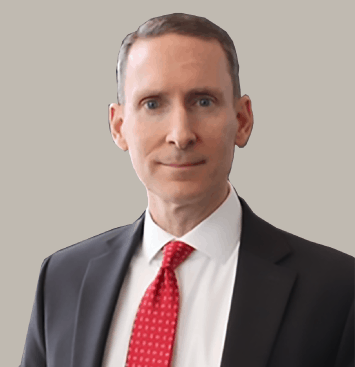
Daniel Barchi is SVP and CIO of NewYork-Presbyterian, one of the largest healthcare providers in the U.S. and the university hospital of Columbia and Cornell. He leads 2,000 technology, pharmacy, informatics, artificial intelligence, and telemedicine specialists who deliver the tools, data, and medicine that physicians and nurses use to deliver acute care and manage population health.
Daniel previously led healthcare technology as CIO at Yale and earlier as CIO of the Carilion Health System. He was President of the Carilion Biomedical Institute and Director of Technology for MCI WorldCom. Daniel graduated from Annapolis, began his career as a U.S. Naval officer at sea, and was awarded the Navy Commendation Medal for leadership and the Southeast Asia Service Medal for Iraq operations in the Red Sea.


About the host
Paddy Padmanabhan is a widely published and quoted thought leader on digital transformation in healthcare. He is the author of The Big Unlock: Harnessing Data and Growing Digital Health Businesses in a Value-Based Care Era, and the CEO of Damo Consulting Inc, a digital transformation and growth advisory firm based in Chicago.Connect
Share on facebook Share on twitter Share on linkedin Share on email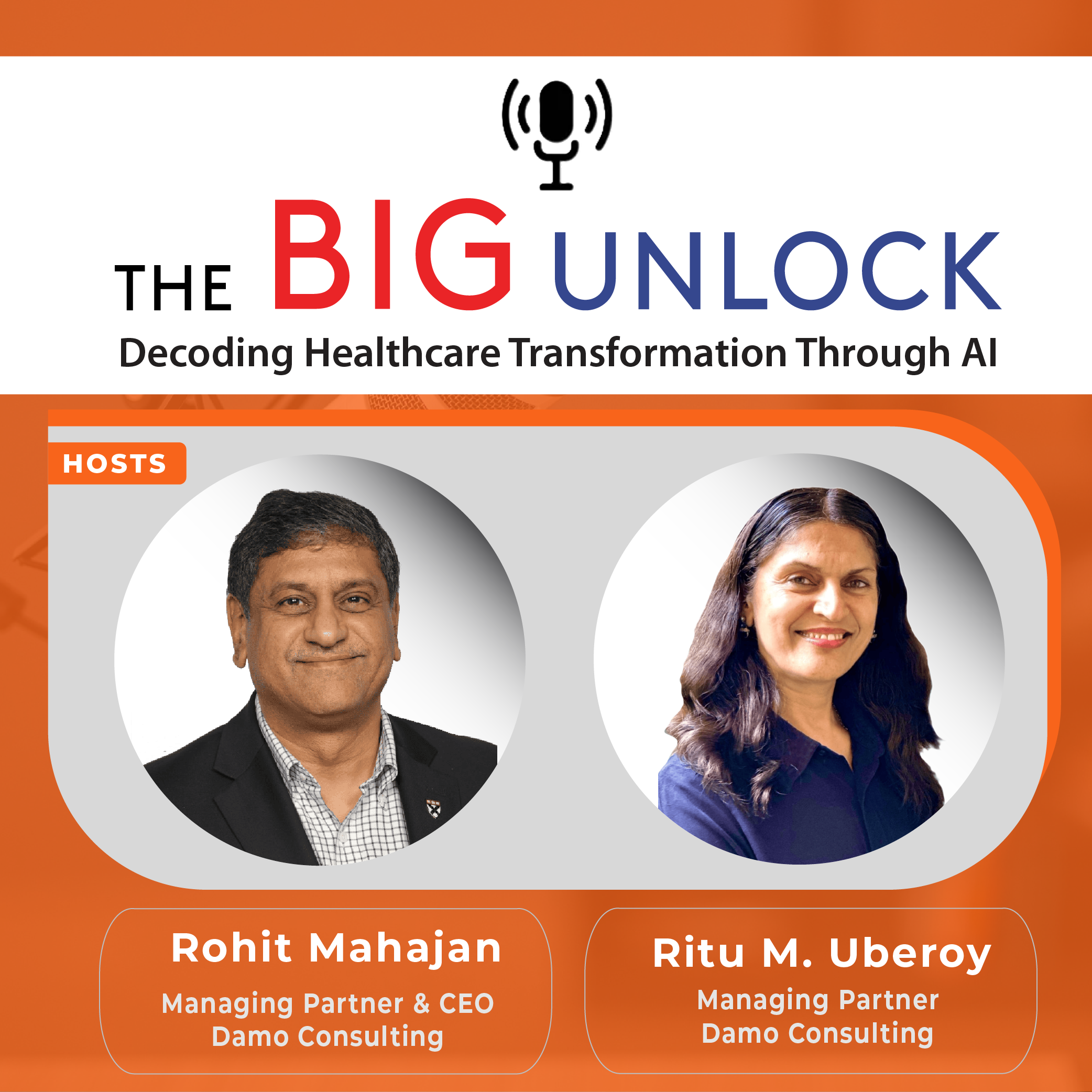
In this podcast, Tony Ambrozie, Chief Digital Officer of Baptist Health South Florida, shares his journey and learnings embracing digital in healthcare. Transformation in...
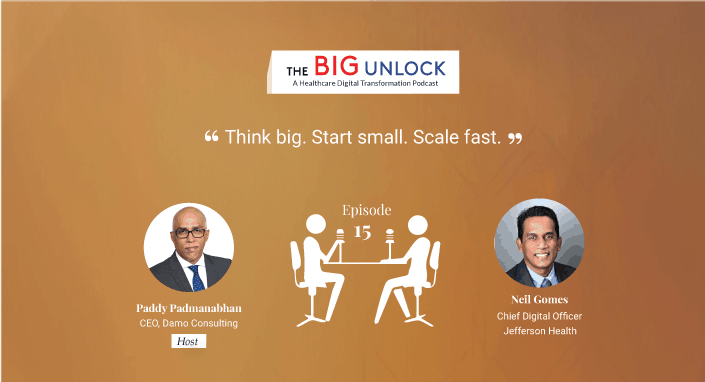
Neil Gomes, Chief Digital Officer, Jefferson Health speaks with Paddy Padmanabhan, CEO, Damo Consulting Inc. on how Jefferson Health is generating value for the...
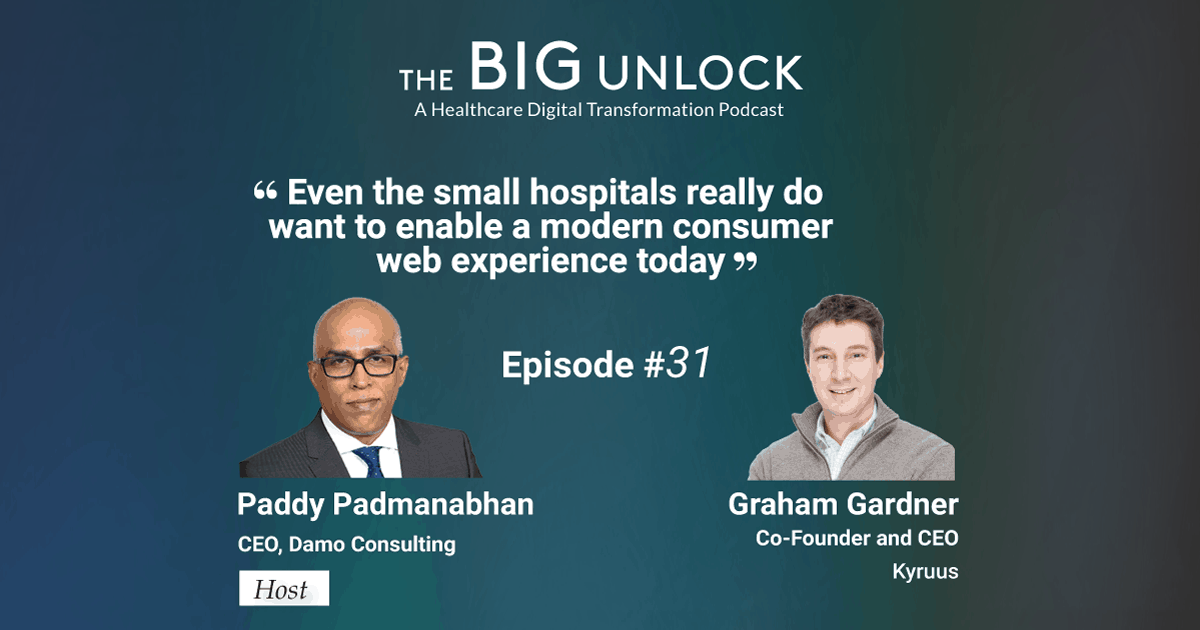
In this episode, Graham Gardner discusses how his company, Kyruus, targets patient access issues in health systems. Inspired by the Moneyball concept, Kyruus uses...